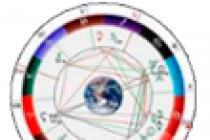At meetings with classmates, friends still make fun of me, remembering the heart-rending screams of the physics teacher, “What acceleration can a horse have!!!”, followed by unprintable expressions that I will not cite here. Physics was my favorite subject at school and only a couple of students in the class, including me, were able to successfully solve problems on it. Now students come to me to learn how to solve problems in physics. The overwhelming majority formulate their problems as follows: “in physics, I understand and know the whole theory, but I can’t solve the problems.”
This is the first misconception that a student needs to get rid of. Only a deep understanding of the theory will give us the key to solving problems. The problem of solving problems is faced primarily by those who do not sufficiently understand the theoretical material. I noticed that schoolchildren simply do not open the theoretical part of the textbook, which is only 1-2 pages away from the given task. The statement “I understand the theoretical part” is based on the fact that he heard the teacher’s explanation in class and did not have any questions. But the teacher’s explanation does not exhaust the material necessary to solve problems! What I am trying to convey to schoolchildren is the need to read and look for answers to questions that will certainly arise during the reading process. Long live progress, finding the answer to a question in physics is not difficult now - GOOGLE knows everything.
My main task, as a physics tutor, is, first of all, to teach a child to formulate questions, and for this, first of all, he must learn to read thoughtfully. If a student does not have questions while studying, this is a sure sign that he does not understand the material. Well, and as a result - problems with solving problems.
Now I will explain in more detail what it means not to understand the theory. This is, first of all, not knowing the connections between the formulas that are given in the theoretical part of the textbook. To do this, you need to carry out all the calculations and evidence yourself. During the process of proof, several questions will arise, having dealt with which, the student will learn the theoretical part of the material and, therefore, make it easier for himself to solve problems on this topic.

Having calculated g in this way, it would not be out of place to note that this same constant can be calculated experimentally by throwing a ball from a height and timing the fall time, thereby recalling the formulas describing free fall. In general, it is always useful to make comments based on the material covered as often as possible. Then students will perceive each topic in connection with the previous ones, and the likelihood of hearing questions from him on the topic will be much higher. A correctly formulated question is already half the answer.
Problems often arise during calculations using formulas. It would seem - what would be easier - to substitute the numbers given in the problem statement into the ready-made formula and calculate the answer using a calculator. No such luck - the answer does not add up. What could be the problem? Most often this is a discrepancy between dimensions - for example, the length is given in meters, and the speed is given in kilometers per second. So, the first question that a student should ask himself is whether everything is in order in his problem with dimensions, and only after bringing the dimensions can he begin to substitute data into formulas.
Well, the second problem, no less common, is basic ignorance of mathematics and the inability to apply mathematical skills in life. 99.9% of students try to make their lives easier with enviable persistence by typing endless zeros into the calculator window. But this is the very case where laziness is the engine of progress. But no, in physics class all the knowledge acquired in mathematics class evaporates without a trace. Here and now is the time to show the student why this knowledge may be needed.
Of course, the problems described are not the only ones when solving problems in physics, but by solving at least them, you will already feel an improvement in the situation and will help your children get rid of the fear of problems, and perhaps even instill an interest in solving unfamiliar problems.
What recommendations can I give to parents? Before calling the tutor, have your child read the last physics paragraph assigned to him, which precedes the problems with which he has problems. Ask him the questions that are at the end of each paragraph. Try to reason with your child when answering the question. You can even have a discussion. To do this, of course, you will also have to look through the textbook, which contains “a lot of letters.” Again, there is Google, which knows everything. It's a rocky road, but it can bring wonderful results. If the problem still remains, there are more than enough tutors. It is important to avoid a situation in which the tutor simply decides homework for his student in class. I believe that my task is to teach how to solve independently, to find the necessary information for a solution in a textbook and on the Internet, and for this ask and formulate questions correctly.

In the following Notes I will tell you how to check the correctness of the solution to a problem if it is not possible to spy on the answer. This can be useful on tests and, in addition, helps you remember the necessary formulas.
With the kind permission of the administration, I add my contact information:
Skype: olga.kalyakina
email: [email protected]
Tel. 8-9649559520
We continue to prepare for the Unified State Exam. This time, the guys who passed physics with 90+ points are sharing their advice.
YOU NEED TO BE ABLE TO WORK WITH A CALCULATOR
Roman Dubovenko, 98 points
I prepared for two months, and after the trial exams they predicted a maximum of 60 points for me. I can give some advice to graduates: you solve a book with 30 options - this is for part A. Just do each number 30 times, sort out the mistakes, watch how the compilers catch the children inattentively.
Now part C.
There are certain models and methods for solving problems, each section has its own. You receive a task, remember the topic, related formulas, a drawing and express the value that is asked. In physics, it is best to do alphabetic expressions and use the calculator only once (you get rid of errors and mathematical errors). Physicists also love to see the final formula.
Therefore, you need to be able to work with a calculator. And be sure to check the batteries, the numbers should be clear on the display - this is the easiest way to find out how it works.
You monotonously analyze the approaches, but there is always a drawing in the approach, remember this.
I went to the exam with full confidence that I would pass, because I ruined the result in mathematics due to my own stupidity and understood that I would not make a detailed mistake in physics. The entire part A was similar to the one I solved during the year, only three tasks were new. Part B is easy. In Part C, always check C5 with bated breath - quantum or electrodynamics. Because the most difficult section is electrodynamics. There I made a mistake, incorrectly giving the co-function of the angle. Well, what can you do? I was incredibly happy about the points, I was only upset because I didn’t give my teacher 100 points.
EVERYTHING TURNED OUT MUCH EASIER THAN I EXPECTED
Anna Kharchina, 96 points
Let me start with the fact that until the 10th grade I didn’t understand physics at all. But when we were asked to choose a major at school for grades 10-11, I had no option other than physics and mathematics. According to the program, we had two hours of physics per week + four hours of electives. In regular lessons we looked at theory, but in electives we delved deeper and solved problems. I am very grateful for my preparation to my school teacher, who taught the theory in a very accessible and systematic way.
In addition to schoolwork, I had two hours a week of tutoring. With him, we basically consolidated the given theory and worked on problem areas. At home, I worked through the problem book from cover to cover on my own.
I would like to advise you to keep careful notes on the theory so that everything is immediately sorted into shelves in your head. Get a notebook with formulas (a thin notebook for foreign words will do): write the formula and unit of measurement there, write all formulas by section (mechanics, molecular science, thermodynamics, etc.). The fact that all the formulas are in one place will help both in solving problems and in directly preparing for the exam.
Solve problems from resources on the Internet (but sometimes there are problems that are not included in the school curriculum). Solve not by options, but by problem numbers. For example, you choose the first task, choose a topic, print all the problems on this topic and solve it. If there are no particular problems with parts A and B, then they can be solved as a whole option, but in part C, I recommend solving problems by task numbers (for example, this month I am only doing task 27).
Have a good calculator (costs ~800 rubles) that calculates trigonometry and everything else. It is very important to buy it in advance and learn how to use it! If you learn all the functions of the calculator, you will be able to perform calculations at the click of a finger.
During the exam itself, start with the test, and if something doesn’t work out from there, leave it and move on. Before part C, I advise you to take a break, eat chocolate and the like - give your brain a break. If you cannot solve something in part C, then draw pictures and write the entire theory that relates to this problem (this way you can get two points out of three for the problem). Don’t forget that there are no problems on the Unified State Exam that are not from the school course, and in principle, everything should be within your power.
Physics was the most important subject for me. And most of the time was spent on preparing for it. As a result, physics turned out to be the easiest subject of all that I took (Russian, mathematics major), and it was in this subject that I scored the most points. I would like to say that due to the abolition of answer options, the organizers made part C simpler in order to avoid blockages. That is why everything turned out to be much easier than I imagined. I had one mistake in the test and one in part C. All the problems from this part were familiar to me and had already been solved by me before, except for one (number 28), and I could not complete it.
If you are well prepared, do not be afraid of anything, believe in yourself and in your success. Treat the exam as a normal option. As you sit down in class, mentally say to yourself, “This is just an option that I need to work hard on right now. I will succeed".
And if you are not very prepared, then you still have enough time to fix it.
Photo from Instagram @_lenasstudu_
If you are going to enroll in technical specialties, then physics is one of the main subjects for you. Not everyone is good at this discipline, so you will have to practice to cope well with all the tasks. We will tell you how to prepare for the Unified State Exam in Physics if you have a limited amount of time at your disposal, but want to get the best possible result.
Structure and features of the Unified State Exam in Physics
In 2018, the Unified State Exam in Physics consists of 2 parts:
- 24 tasks in which you need to give a short answer without a solution. It can be an integer, a fraction, or a sequence of numbers. The tasks themselves are of varying levels of difficulty. There are simple ones, for example: the maximum height to which a body weighing 1 kg rises is 20 meters. Find the kinetic energy at the moment immediately after the throw. The solution does not involve a lot of action. But there are also tasks where you have to rack your brains.
- Tasks that need to be solved with a detailed explanation (a record of the condition, the course of the solution and the final answer). All the tasks here are of a fairly high level. For example: a cylinder containing m1 = 1 kg of nitrogen exploded at a temperature t1 = 327°C during a strength test. What mass of hydrogen m2 could be stored in such a cylinder at a temperature t2 = 27°C, having a fivefold safety margin? Molar mass of nitrogen M1 = 28 g/mol, hydrogen M2 = 2 g/mol.
Compared to last year, the number of tasks increased by one (in the first part, a task on knowledge of the basics of astrophysics was added). There are a total of 32 tasks that you need to solve within 235 minutes.
Schoolchildren will have more tasks this year
Since physics is an elective subject, the Unified State Exam in this subject is usually purposefully taken by those who are planning to go into technical specialties, which means that the graduate knows at least the basics. Based on this knowledge, you can score not only the minimum score, but also much higher. The main thing is that you prepare for the Unified State Exam in Physics correctly.
We suggest that you familiarize yourself with our tips for preparing for the Unified State Exam, depending on how much time you have to learn the material and solve problems. After all, some people start preparing a year before taking the exam, others several months before, while others remember the Unified State Exam in Physics only a week before taking the exam! We will tell you how to prepare in a short time, but as efficiently as possible.
How to prepare yourself a few months before day X
If you have 2-3 months to prepare for the Unified State Exam, then you can start with the theory, since you will have time to read and assimilate it. Divide the theory into 5 main parts:
- Mechanics;
- Thermodynamics and molecular physics;
- Magnetism;
- Optics;
- Electrostatics and direct current.
Work through each of these topics separately, learn all the formulas, first the basic ones, and then the specific ones in each of these sections. You also need to know by heart all the quantities and their correspondence to certain indicators. This will give you a theoretical basis for solving both the tasks of the first part and the problems from part No. 2.
After you learn how to solve simple problems and tests, move on to more complex tasks
After you have worked through the theory in these sections, start solving simple problems that take just a couple of steps to use the formulas in practice. Also, after a clear knowledge of the formulas, solve tests, try to solve the maximum number of them, in order not only to reinforce your theoretical knowledge, but also to understand all the features of the tasks, learn to correctly understand the questions, and apply certain formulas and laws.
After you learn how to solve simple problems and tests, move on to more complex tasks, try to build a solution as competently as possible, using rational ways. Solve as many tasks from the second part as possible, which will help you understand their specifics. It often happens that the tasks in the Unified State Exam are practically the same as last year’s, you just need to find slightly different values or perform the reverse steps, so be sure to look at the Unified State Exam for previous years.
The day before taking the Unified State Exam, it is better to give up solving problems and repetition and just relax.
Start of preparation a month before the test
If your time is limited to 30 days, then you should follow these steps to successfully and quickly prepare for the Unified State Exam:
- From the above sections you should make a summary table with basic formulas and memorize them.
- Review typical assignments. If among them there are those that you solve well, you can refuse to work on such tasks, devoting time to “problematic” topics. This is what you should focus on in theory.
- Learn the basic quantities and their meanings, the procedure for converting one quantity to another.
- Try to solve as many tests as possible, which will help you understand the meaning of the tasks and understand their logic.
- Constantly refresh your knowledge of basic formulas, this will help you score good scores in testing, even if you do not remember complex formulas and laws.
- If you want to aim for fairly high results, then be sure to check out the past Unified State Examinations. In particular, focus on part 2, because the logic of the tasks can be repeated, and, knowing the course of the solution, you will definitely come to the right result! It is unlikely that you will be able to learn how to build the logic for solving such problems on your own, so it is advisable to be able to find commonalities between the tasks of previous years and the current task.
If you prepare according to such a plan, then you will be able to score not only the minimum points, but also much higher, it all depends on your knowledge in this discipline, the base that you had even before the start of preparation.
A couple of quick weeks to memorize
If you remembered to take physics a couple of weeks before the test, then there is still hope to score good points if you have certain knowledge, and also to overcome the minimum barrier if you are a complete 0 in physics. For effective preparation, you should stick to this plan works:
- Write down the basic formulas and try to remember them. It is advisable to study well at least a couple of topics from the main five. But you should know the basic formulas in each section!
It’s unrealistic to prepare for the Unified State Exam in Physics in a couple of weeks from scratch, so don’t rely on luck, but cram from the beginning of the year
- Work with the Unified State Exam of previous years, understand the logic of the tasks, as well as typical questions.
- Try to cooperate with classmates and friends. When solving problems, you may know one topic well, and they know another, if you simply tell each other the solution, you will have a quick and effective exchange of knowledge!
- If you want to solve any tasks from the second part, then you better try to study last year’s Unified State Exam, as we described when preparing for testing in a month.
If you fulfill all these points responsibly, you can be sure of receiving the minimum acceptable score! As a rule, people who start preparing a week in advance don’t expect anything more.
Time management
As we already said, you have 235 minutes or almost 4 hours to complete the tasks. In order to use this time as rationally as possible, first complete all the simple tasks, those that you least doubt from the first part. If you are good with physics, then you will only have a few unsolved tasks from this part. For those who started preparation from scratch, it is on the first part that the maximum emphasis should be placed in order to gain the necessary points.
Proper distribution of your energy and time during the exam is the key to success
The second part requires a lot of time, fortunately, you have no problems with it. Read the tasks carefully, and then complete those that you understand best first. After this, proceed to solving those tasks from parts 1 and 2 that you doubt. If you don't have much knowledge in physics, the second part is also worth at least reading. It is quite possible that the logic of solving problems will be familiar to you, you will be able to solve 1-2 tasks correctly, based on the experience gained from watching last year’s Unified State Exams.
Due to the fact that there is a lot of time, you will not have to rush. Read the assignments carefully, understand the essence of the problem, and only then solve it.
This way you can prepare well for the Unified State Exam in one of the most difficult disciplines, even if you start your preparation when testing is literally “nearby”.
Everything that happens in our world happens due to the influence of certain forces in physics. And you will have to learn each of them, if not at school, then certainly at college.
Of course, you can try to memorize them. But it will be much faster, more fun and interesting to simply understand the essence of each physical force and how it interacts with the environment.
Forces in nature and fundamental interactions
There are a huge number of forces. Archimedes force, gravity force, Ampere force, Lorentz force, Coreolis force, rolling friction force etc. Actually, it is impossible to learn all the powers, since not all of them have been discovered yet. But this is also very important - all forces known to us, without exception, can be reduced to the manifestation of the so-called fundamental physical interactions.
There are 4 fundamental physical interactions in nature. It would be more accurate to say that people know 4 fundamental interactions, and at the moment no other interactions have been discovered. What are these interactions?
- Gravitational interaction
- Electromagnetic interaction
- Strong interaction
- Weak interaction
Thus, gravity is a manifestation of gravitational interaction. Most mechanical forces (frictional force, elastic force) are a consequence of electromagnetic interaction. The strong interaction holds the nucleons of an atom's nucleus together, preventing the nucleus from decaying. The weak interaction causes free elementary particles to disintegrate. At the same time, electromagnetic and weak interactions are combined into electroweak interaction.
A possible fifth fundamental interaction (after the discovery Higgs boson) are called Higgs field. But everything in this area has been studied so little that we will not rush to conclusions, but rather wait to see what scientists from CERN tell us.

There are two ways to learn the laws of physics.
First– it’s stupid to learn meanings, definitions, formulas. A significant drawback of this method is that it is unlikely to help answer additional questions from the teacher. There is another important disadvantage of this method - by learning this way, you will not get the most important thing: understanding. As a result, memorizing a rule/formula/law or whatever allows you to acquire only fragile, short-term knowledge on the topic.
Second way– understanding of the material being studied. But is it so easy to understand what (in your opinion) is impossible to understand?
There is, there is a solution to this terribly difficult but solvable problem! Here are a few ways to learn all the forces in physics (and in any other subject):

On a note!
It is important to remember and know all the physical forces (or learn the entire list of them in physics) in order to avoid awkward misunderstandings. Remember that the mass of a body is not its weight, but a measure of its inertia. For example, in conditions of weightlessness, bodies have no weight, because there is no gravity. But if you want to move a body in zero gravity, you will have to influence it with a certain force. And the higher the body weight, the more force will have to be used.
If you can imagine how a person's weight can change depending on the choice of planet, you will be able to quickly understand the concept of gravitational force, the concepts of weight and mass, acceleration force and other physical forces. This understanding will bring with it a logical awareness of other processes taking place, and as a result you will not even have to memorize the incomprehensible material - you will be able to remember it as you go. It is enough to simply understand the essence.

- To understand the electromagnetic effect, it will be enough to simply understand how current flows through a conductor and what fields are generated, and how these fields interact with each other. Consider this using simple examples, and it will not be difficult for you to understand the principles of operation of an electric motor, the principles of burning a light bulb, etc.
The teacher will primarily be concerned with how well you understand the material you have studied. And it’s not so important whether you remember all the formulas by heart. And in case of solving tests, laboratory problems, practical work, or they will always be able to help you our specialists, whose strength lies in knowledge and many years of practical experience!
Physics comes to us in the 7th grade of a comprehensive school, although in fact we are familiar with it almost from the cradle, because it is everything that surrounds us. This subject seems very difficult to study, but it needs to be learned.
This article is intended for persons over 18 years of age
Have you already turned 18?
You can learn physics in different ways - all methods are good in their own way (but they are not the same for everyone). The school curriculum does not provide a complete understanding (and acceptance) of all phenomena and processes. The culprit is a lack of practical knowledge, because the learned theory essentially gives nothing (especially for people with little spatial imagination).
So, before you start studying this interesting subject, you need to immediately find out two things - why you are studying physics and what results you expect.
Do you want to pass the Unified State Exam and enter a technical university? Great - you can start distance learning on the Internet. Now many universities or simply professors conduct their online courses, where they present the entire school physics course in a fairly accessible form. But there are also small disadvantages: first, get ready for the fact that it will not be free (and the higher the scientific title of your virtual teacher, the more expensive), second, you will only teach theory. You will have to use any technology at home and independently.
If you simply have problematic learning - a discrepancy in views with the teacher, missed lessons, laziness, or the language of presentation is simply incomprehensible, then the situation is much simpler. You just need to pull yourself together, and pick up the books and teach, teach, teach. This is the only way to get clear subject-specific results (in all subjects at once) and significantly increase the level of your knowledge. Remember - it is unrealistic to learn physics in a dream (even though you really want to). And very effective heuristic training will not bear fruit without a good knowledge of the basics of the theory. That is, positive planned results are possible only if:
- qualitative study of theory;
- developmental education in the relationship between physics and other sciences;
- performing exercises in practice;
- classes with like-minded people (if you really feel like doing heuristics).
DIV_ADBLOCK290">
Starting to learn physics from scratch is the most difficult, but at the same time the simplest stage. The only difficulty is that you will have to remember a lot of rather contradictory and complex information in a hitherto unfamiliar language - you will need to work hard on the terms. But in principle, this is all possible and you don’t need anything supernatural for this.
How to learn physics from scratch?
Don't expect that the beginning of learning will be very difficult - it is a fairly simple science, provided you understand its essence. Don’t rush to learn a lot of different terms - first understand each phenomenon and “try” it on in your everyday life. This is the only way physics can come to life for you and become as understandable as possible—you simply won’t achieve this by cramming. Therefore, the first rule is to learn physics measuredly, without sudden jerks, without going to extremes.
Where to begin? Start with textbooks, unfortunately, they are important and necessary. It is there that you will find the necessary formulas and terms that you cannot do without in the learning process. You won’t be able to learn them quickly; there is a reason to write them down on pieces of paper and hang them in prominent places (no one has yet canceled visual memory). And then in literally 5 minutes you will refresh your memory every day until you finally remember them.
You can achieve the highest quality results in about a year - this is a complete and understandable physics course. Of course, it will be possible to see the first changes in a month - this time will be quite enough to master the basic concepts (but not deep knowledge - please do not be confused).
But despite the ease of the subject, don’t expect that you will be able to learn everything in 1 day or in a week - it’s impossible. Therefore, there is a reason to sit down with textbooks long before the start of the Unified State Exam. And it’s not worth getting hung up on the question of how long it will take to memorize physics - it’s very unpredictable. This is because different sections of this subject are taught in completely different ways, and no one knows how kinematics or optics will “suit” you. Therefore, study sequentially: paragraph by paragraph, formula by formula. It is better to write down definitions several times and refresh your memory from time to time. This is the basis that you must remember; it is important to learn how to operate with definitions (use them). To do this, try to apply physics to life - use everyday terms.
But most importantly, the basis of each method and method of training is daily and hard work, without which you will not get results. And this is the second rule of easy learning of a subject - the more you learn new things, the easier it will be for you. Forget recommendations like science in your sleep, even if it works, it certainly doesn’t work with physics. Instead, get busy with problems - not only is it a way to understand the next law, but it's also a great workout for the mind.
Why do you need to study physics? Probably 90% of schoolchildren will answer that it is for the Unified State Exam, but this is not at all true. In life, it will come in handy much more often than geography - the likelihood of getting lost in the forest is somewhat lower than changing a light bulb yourself. Therefore, the question of why physics is needed can be answered unequivocally - for yourself. Of course, not everyone will need it in full, but basic knowledge is simply necessary. Therefore, take a closer look at the basics - this is a way to easily and simply understand (not learn) the basic laws.
c"> Is it possible to learn physics on your own?
Of course you can - learn definitions, terms, laws, formulas, try to apply the acquired knowledge in practice. It will also be important to clarify the question - how to teach? Set aside at least an hour a day for physics. Leave half of this time to get new material - read the textbook. Leave a quarter of an hour for cramming or repetition of new concepts. The remaining 15 minutes is practice time. That is, observe a physical phenomenon, do an experiment, or simply solve an interesting problem.
Is it really possible to quickly learn physics at this rate? Most likely not - your knowledge will be quite deep, but not extensive. But this is the only way to learn physics correctly.
The easiest way to do this is if you have lost knowledge only for the 7th grade (although in the 9th grade this is already a problem). You simply restore small gaps in knowledge and that’s it. But if 10th grade is just around the corner, and your knowledge of physics is zero, this is of course a difficult situation, but fixable. It is enough to take all the textbooks for grades 7, 8, 9 and properly, gradually study each section. There is an easier way - take the publication for applicants. There, the entire school physics course is collected in one book, but do not expect detailed and consistent explanations - the supporting materials assume an elementary level of knowledge.
Learning physics is a very long journey that can only be completed with honor through daily hard work.














